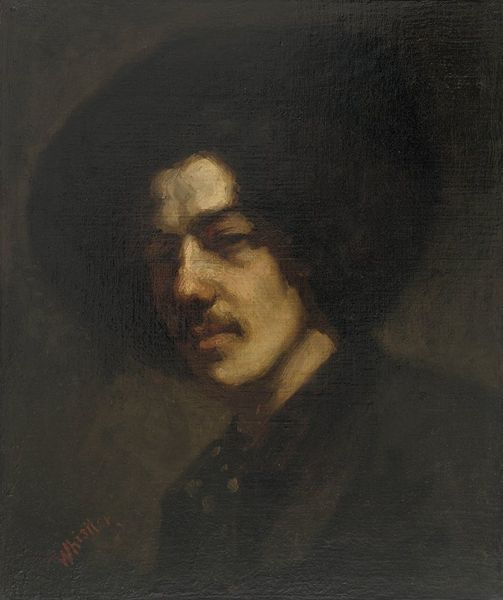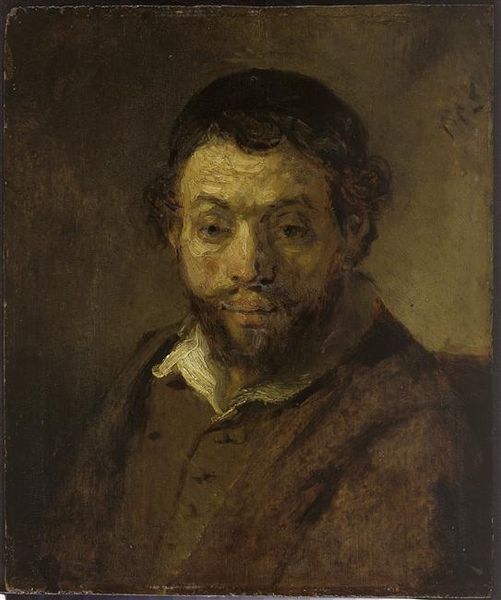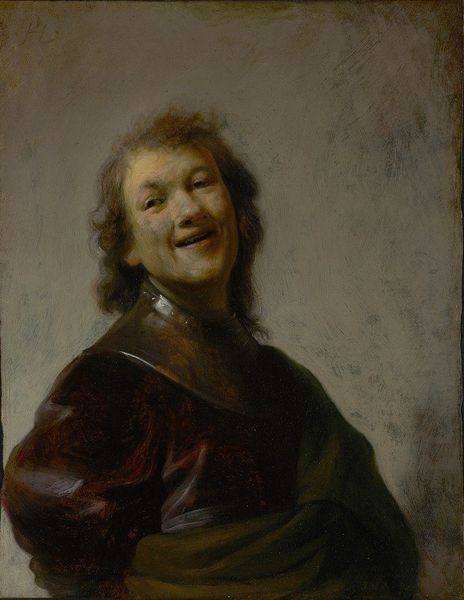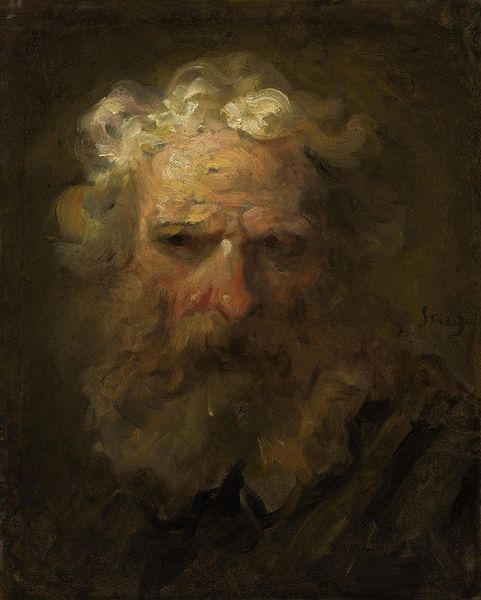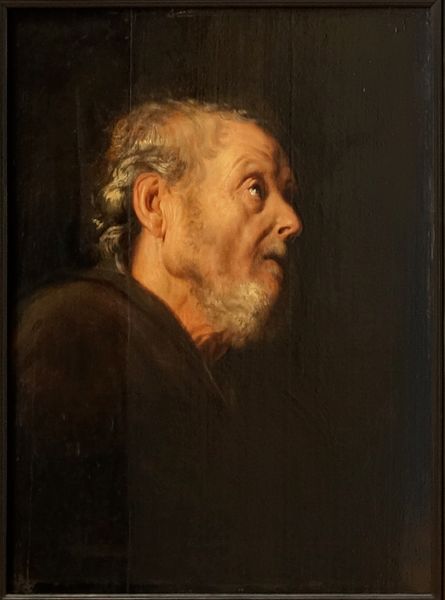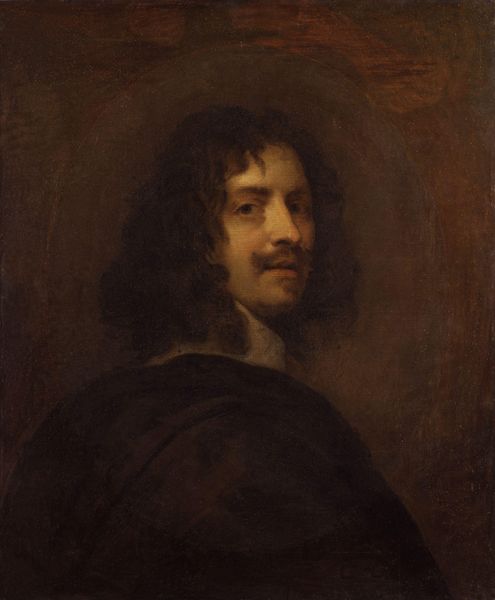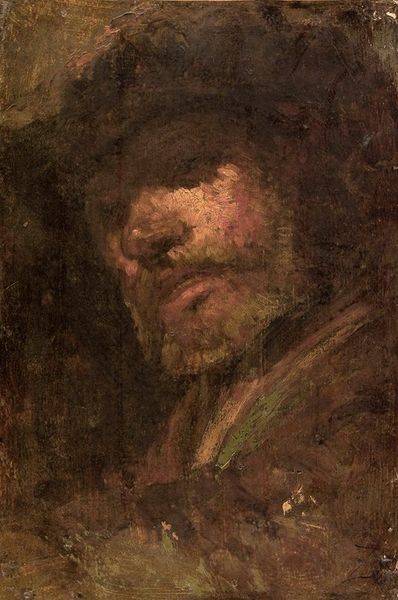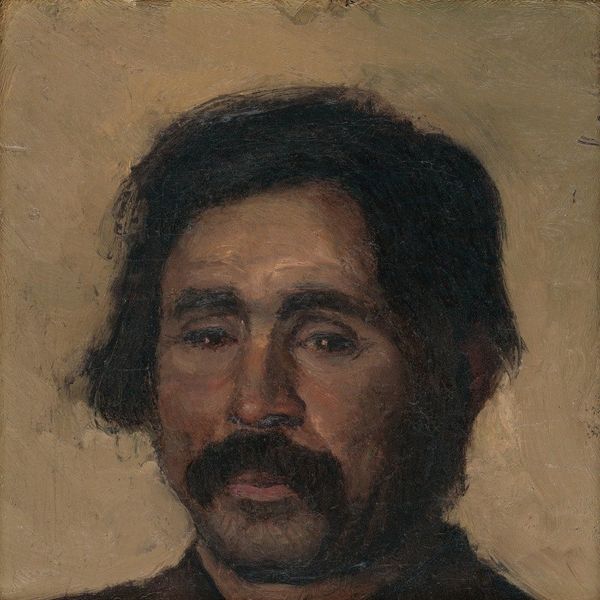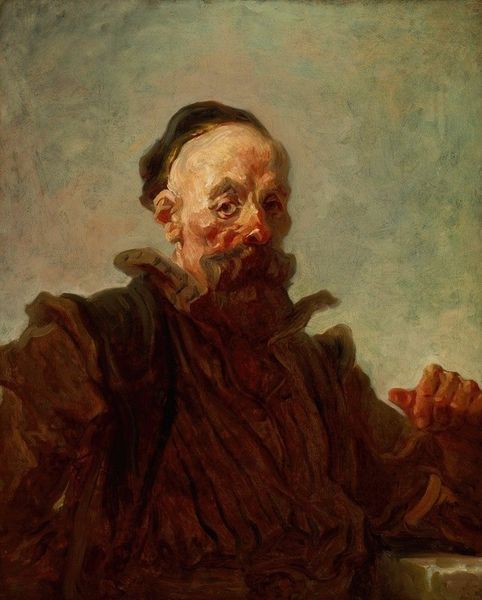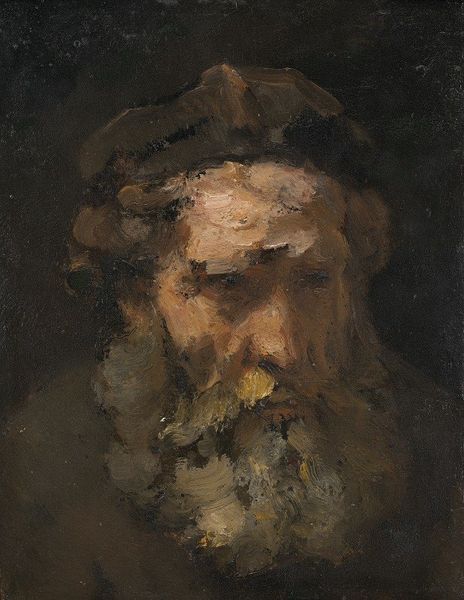
painting, oil-paint
#
portrait
#
figurative
#
baroque
#
dutch-golden-age
#
portrait
#
painting
#
oil-paint
#
male portrait
#
portrait reference
#
portrait head and shoulder
#
animal drawing portrait
#
portrait drawing
#
genre-painting
#
facial portrait
#
portrait art
#
fine art portrait
#
realism
#
digital portrait
Copyright: Public Domain: Artvee
Editor: Here we have Rembrandt van Rijn’s “The Laughing Man,” an oil painting from around 1629. The texture looks so thick and the dark background makes that laughing face really pop! What’s your interpretation of this character? Curator: Well, it's easy to be drawn in by the emotion, isn't it? But let's think about the public image of art at the time. What do you think Rembrandt was trying to say about portraits and representation with such a character, seemingly caught off guard, in what seems like performative laughter? Editor: Performative? That's interesting! I hadn’t considered it that way. It looks so spontaneous. Curator: Precisely. Consider how the art market and patronage worked then. The Dutch Golden Age was emerging, and suddenly there was a merchant class demanding art. Now ask yourself, what kind of statements can an artist like Rembrandt make to his peers, and the social establishment with images like these? Is this individual portrait a simple commission or perhaps something more subversive? Editor: So, it’s less about capturing a genuine moment and more about Rembrandt using the image to say something about societal expectations, or challenge traditional portraiture? Curator: Exactly. Maybe he’s playfully critiquing the conventions of formal portraiture, or poking fun at the emerging wealthy class, the people who would hang these paintings on their walls. It’s not just *who* is portrayed, but *how.* Editor: That definitely gives me a new perspective. I was initially so focused on the obvious emotion, I hadn't considered the context. Thank you! Curator: And I appreciate you keeping my perspective in check. It's a reminder that there are multiple readings that can happen when an artwork enters the world and interacts with multiple social contexts!
Comments
No comments
Be the first to comment and join the conversation on the ultimate creative platform.
